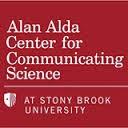He has written 8 stories (with more on the way) that use his experiences in the engineering field, so the stories are very realistic - and yet clear and simple enough for learners.
From the About section: "The objective is to encourage students to consider or continue careers in science, technology, engineering, or math (STEM), show what it may be like, dispel a myth or two, and encourage creativity, problem solving, and the confidence to make the world a better place."
The website: http://engineerstories.com/
The stories are available for free, in a downloadable pdf format. They cover various aspects of engineering, and how engineering skills are used to solve all types of problems.
An example is The Orbital Mechanic, in which aerospace engineers have to deal with the problem of a spacecraft whose orbit has been damaged by an unusually large solar flare. In the story, the chief engineer has brought his young teenage daughter to "Bring Your Child to Work Day," so he explains to her step-by-step how he has plotted the spacecraft's orbit, and what the nature of the problem is.
This provides a simple, yet factually accurate, explanation that would not only be easy enough for ESP students to understand, but also provide them with a good model of a clear technical explanation for a non-technical audience.
By the way, in this story the engineer is hoping to get his daughter interested in aspects of engineering. This relates very well to ideas I've given in other posts on getting young people interested in technology (see the posts Girls Who Code, Aug. 24, 2014, and Inspiring tomorrow's engineers, May 18, 2014).
In My Journey to Engineering, Kenneth Hardman explains how he became interested in engineering - from being a curious boy who like to tinker with things in his environment, to his current role in engineering. In his story he asks the reader, "Dear reader, what was it that drew you, as a child, toward science, technology, engineering, or math?"
It would be interesting for students to discuss this together in class before reading the story, and then compare experiences with the author's account.
Blog - In addition to the stories, there is a blog on the website with interesting entries and links to other websites.
Riddles - There are also "Engineering Riddles" in the topic areas of physics, math, materials, heat transfer, and fluid mechanics. A riddle from "materials" is:
You're welcome to disfigure, transform or twist with vigor,
But let me be your warning, to save you dreadful mourning.
When released from deformation, whether tension or compression,
From my left get restoration, from my right, life-long mutation.
I'm a bridge best not for burning, a point of no returning,
Where rifts occur much faster, and cycling meets disaster.
What material property am I?
I didn't know the answer - but notice the relevant and useful vocabulary for areas of material engineering:
- disfigure
- transform
- twist
- deform
- tension
- compression
- restore
- mutation
- burning
- rifts
- cycling
http://engineerstories.com/2014/08/02/engineering-riddle-no-4-materials-a-point-of-no-returning/







